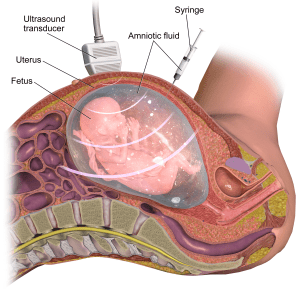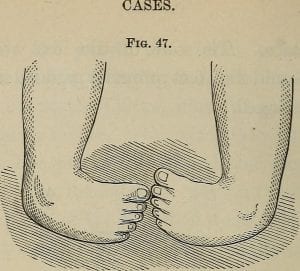Pregnancy is both a marvel and a mystery. People don’t know what exactly happens inside the stomach when life is developing inside of it. As the months pass by, it just grows, and a baby comes out when it is due.

In pregnancy, there is a water-like substance that surrounds the fetus called Amniotic Fluid. This contains fetal cells and other things like alpha-fetoprotein (AFP). The amniotic fluid can be located in the uterus, which serves as a protective layer or membrane for the fetus. This can also tell you and your doctor essential information about your baby.
What Is Amniocentesis?


Amniocentesis is the practice of taking a small amount of amniotic fluid from the sac for prenatal testing. Doctors do this by inserting a fine needle into your uterus. Afterward, the laboratory will check the fluid and analyze it. Lots of tests can be done with the amniotic fluid. It may differ from one person to another because of the genetic risks and the indications of the tests.
Why Is An Amniocentesis Performed?
Before undergoing amniocentesis, the doctor may perform a complete anatomical ultrasound to check for other things like an abnormality in the chromosomes or other irregularities.
Performing an amniocentesis will not pose any significant harm to you or your baby. As also mentioned in Mayo Clinic, this test is typically done and offered to mothers who are at risk of developing genetic diseases and other health issues like:
- Having an irregular or abnormal lab screens
- Congenital disabilities which can be tested and found in the family history
- Have given birth to a child who has in-born defects
Amniocentesis will not guarantee at one hundred percent if your baby has congenital disabilities, but it can detect any severe genetic risks of the parents. These are some of the disorders or illnesses that can be searched by administering amniocentesis:


- Down Syndrome
- Sickle Cell Disease
- Cystic Fibrosis
- Muscular Dystrophy
- Tay-Sachs
- Other similar diseases
Taking this test can help you know if your baby will develop these diseases due to their brain or spinal column, not developing correctly. It is also known as “neural tube defects.” Examples of neural tube defects are Spina Bifida and Anencephaly.
However, amniocentesis cannot detect all congenital disabilities. Because of this, other tests like ultrasound are done along with amniocentesis to make up for this shortcoming. There are defects like cleft lip and club foot that amniocentesis cannot detect, but ultrasound can easily view. However, some problems cannot be detected by both amniocentesis and ultrasound, and with that, other tests are required.


Knowing the baby’s gender is an exciting part of the pregnancy. Some people prefer that they see the gender before they give birth, while some want to keep the excitement going by waiting until they give birth. One of the popular misconceptions about finding the gender of the baby is that ultrasound is the only way to know the baby’s gender. However, there are other ways to understand this. Besides ultrasound, another method of determining the gender of the baby is by amniocentesis. This is one of the most accurate ways to know the gender of your baby before giving birth.
When Is Amniocentesis Performed?
If you are to undergo amniocentesis, the doctor will usually guide you on what to do before the test, and he’ll recommend the steps in taking it. Mothers are typically advised to take the procedure during their 15th and 18th weeks of pregnancy.
How Accurate Is Amniocentesis?
Worrying about the accuracy of the test is understandable. However, you shouldn’t think much about the accuracy rate of this test because it’s 99.4%.
Granted that it’s not a 100% accurate test, 99.4% is still high with a little room for error only. One of the reasons why an amniocentesis may fail is because of the 0.6% and the amniotic fluid. If a too small amount of amniotic fluid is collected or if the harvested cells in the fluid don’t grow or were not correctly cultured, the test may fail.
Does Amniocentesis Have Risks?
Generally, the amniocentesis procedure is harmless to the mother and the baby, but there is still a very small chance that it can harm. However, these chances of the risk happening are less than 1% or 1 in every 200 to 1 in 400 mothers or babies could experience this. Possible complications could be injuries and infections, but they are highly rare. Amniocentesis tests risks should not be a matter of worry because it is only isolated.
Can I Choose Not To Have An Amniocentesis?
What happens is that there will be genetic counseling before the actual procedure. Afterward, the doctor or the one in charge will be telling you the risks and advantages of doing the test. Once it’s all explained, you will be given a choice to go through the procedure or not. Don’t beat yourself up if you choose not to go through with the process. Some choose not to go through it for fear of amniocentesis tests risks.
What Happens During An Amniocentesis?


The doctor will first clean the area on your abdomen with antiseptic. It is in preparation for the procedure. You will be given a choice to either use an anesthetic to reduce the pain or not.
The placenta and the position of the fetus will also be located using ultrasound. Using the ultrasound as a guide, a fine needle will be inserted through your abdomen. It is directed to the uterus and then the amniotic sac. Don’t worry because the doctors will make sure it’s far from the baby. Only small amounts of amniotic fluid will just be harvested for analysis.
There might be some discomfort like cramps during menstruation that can be felt for a few hours after getting the test, but many say that it’s tolerable.
Can I Resume Normal Activities After An Amniocentesis?
It’s highly recommended for the mother to rest and relax for the rest of the day after undergoing the procedure. Any strenuous activity like lifting children or sexual intercourse should be avoided during this time. It is important to take necessary precautions to avoid amniocentesis test risks.


Tylenol or acetaminophen can be taken every 4 hours to reduce the pain. The next day, you can go back to doing your daily activities unless the doctor prohibits you.
When Should I Call My Doctor After An Amniocentesis?
Fever, bleeding, or other severe symptoms warrant a call to the doctor.
When Will I Receive The Results Of The Amniocentesis?
Expect the results of the procedure to come out in two to three weeks. If it’s still not available after the third week, then you can do a follow-up call or visit for the results.
What Is Amniocentesis: Frequently Asked Questions
Last Updated on January 11, 2023 by Rejie Salazar
DISCLAIMER (IMPORTANT): This information (including all text, images, audio, or other formats on FamilyHype.com) is not intended to be a substitute for informed professional advice, diagnosis, endorsement or treatment. You should not take any action or avoid taking action without consulting a qualified professional. Always seek the advice of your physician or other qualified health provider with any questions about medical conditions. Do not disregard professional medical advice or delay seeking advice or treatment because of something you have read here a FamilyHype.com.